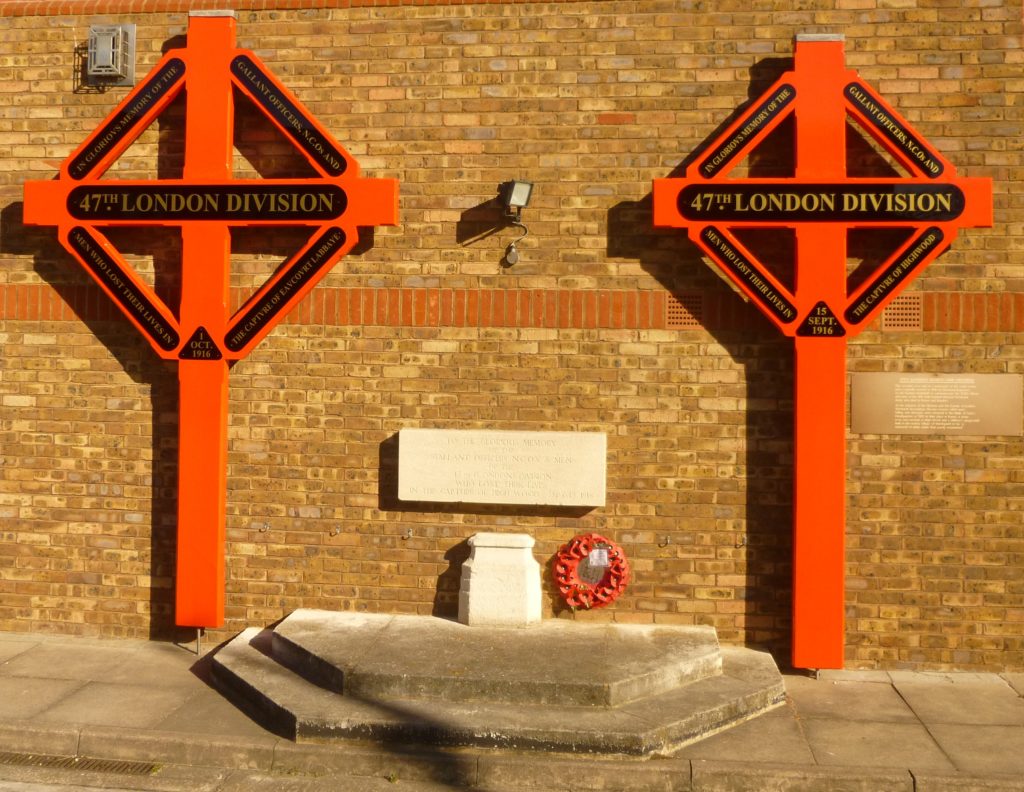
The 1st Battalion moved a short distance to the Amiens-Albert road and marched eastwards to Albert on 11th September 1916. From there, the Battalion moved to the support area around Bottom and Mametz Wood. Few trees remained in a mass of splintered timber as these woods were on the fringe of the great battle of the Somme, which had lasted throughout the months of July and August. Fearful casualties had been suffered by both sides but little territory had been gained.
The London Irish were to participate in a major attack by 4th Army and their task was to seize the high ground at Bois de Fourneaux, better known as High Wood, which already had an evil reputation. On the verge of being captured by the 7th Division on 14th July, it had remained in enemy hands despite repeated attacks. The Wood was the key to the German defence system and division after division had been thrown back with heavy casualties over the previous two months. Small advances had taken the British line into the southern edge of High Wood, but the task facing the London Irish was the most severe so far. Great hopes were attached to the use of tanks but the two preceding the assault of the battalion failed, one being stuck in the front line, and the other unable to make progress over the battered tree stumps. Because the initial artillery fire plan was limited so as to prevent damage to the tanks, it was completely inadequate serving only to signal the London Irish attack. German machine guns were able to pour an intense fire into the first attacking wave and many were killed. An attempt to outflank the enemy was more successful as more battalions moved up and became involved in the fighting. Artillery and trench mortar was requested on specific targets and by the afternoon the whole of High Wood was in our hands. The operation had been very costly to the London Irish. The battalion’s casualties at the end of the day totalled 223 all ranks. Major Trinder and five other officers with 68 other ranks were killed. The London Irish were relieved two days later, on 17th September, but late on the same day were ordered back into the line, to be finally relieved on the 20th, dog tired and plastered from head to foot in mud. The High Wood attack on 15th September reduced the magnificent 141st Brigade of highly trained troops to the strength of one good battalion. The failure of the tanks was a most unfortunate feature.
The Irish were back in the line on 29th September in preparation for an attack on the enemy held Flers line, another part of the German defence system stemming from High Wood. For this assault, Major Mahon, commanding the battalion had asked to dispense with artillery support and the London Irish advancing in relative silence took the enemy by surprise. The battalion then advanced again and without much difficulty over ran the village of Eaucourt l’Abbaye.
FROM THE OFFICIAL HISTORY.
“The High Wood attack on 15th September was very costly so far as 141 Brigade was concerned. The operations on that day reduced a magnificent brigade of highly trained and experienced troops, to the strength of less than one good battalion.”
CASUALTIES AT HIGH WOOD:
OFFICERS KILLED
Major John Robert Trinder MC
Captain Philip Maginn MC AND BAR
Lieutenant Stanley MacBeth
2Lt William Plummer
2Lt Arthur Cunningham
2Lt R C Munro (Died of Wounds)
OFFICERS WOUNDED
2Lt J A P Amont
2Lt H Banks
2Lt H Crawford
OTHER RANKS
68 killed and 11 died of wounds.
138 wounded and 31 missing.
“The London Irish had no regrets at leaving the Somme. A magnificent battalion had been shattered at High Wood, largely owing to the failure of the tanks, but with amazing resilience, cheerfulness and courage, the survivors strengthened by new drafts had tackled their subsequent tasks with determination, efficiency and success. In conditions requiring soldierly qualities of a very high order, the Battalion had emerged not only with the old traditions maintained, but with a higher reputation to uphold in the future.”